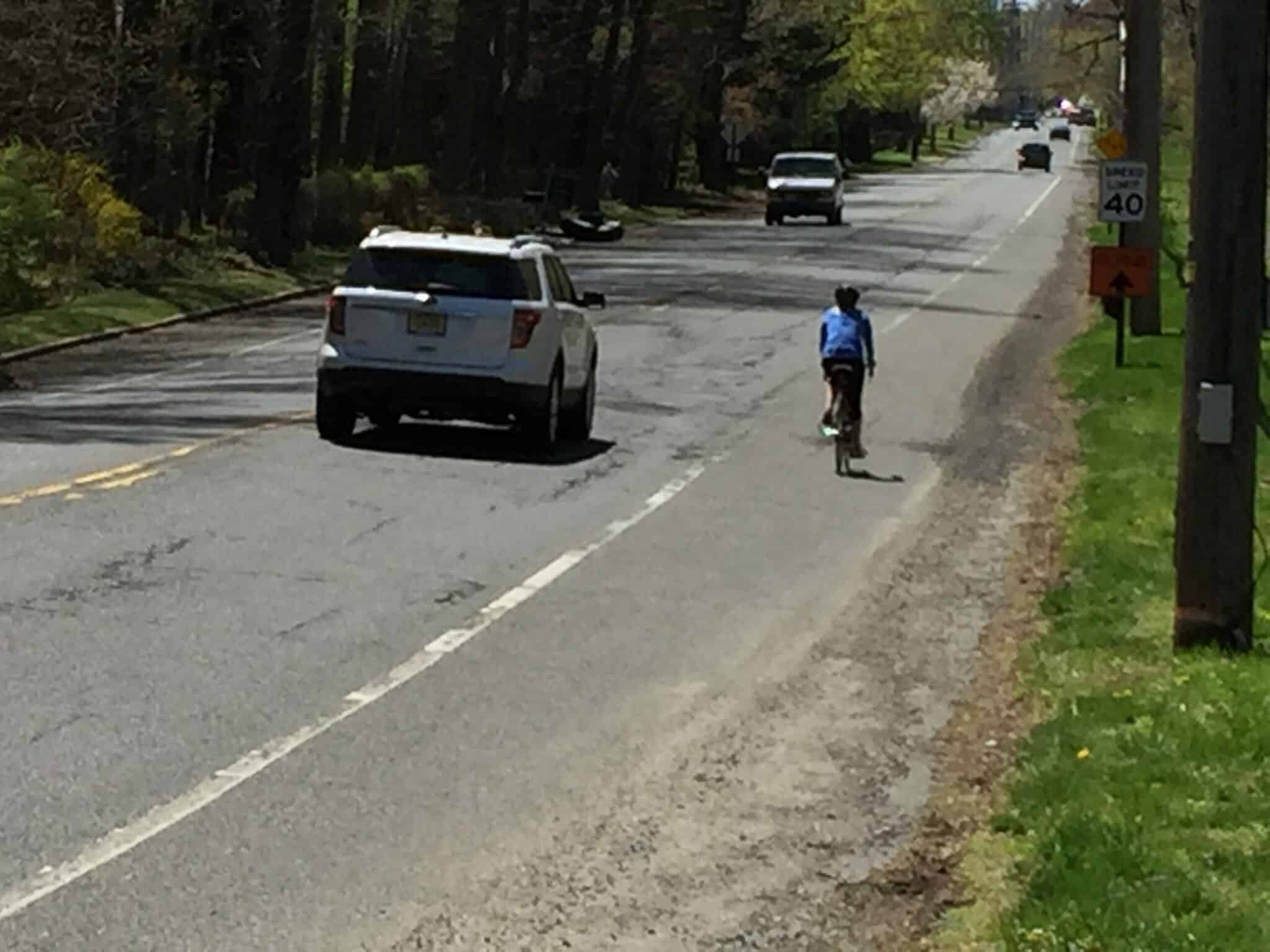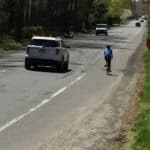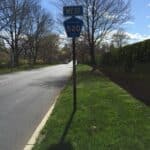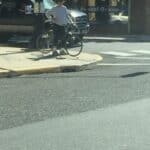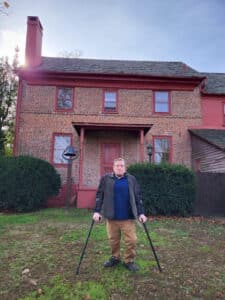On July 22, 2010, Monmouth County, New Jersey made history by becoming the state’s first county to adopt a Complete streets policy, resolving to implement the policy “though [SIC] the planning, design, construction, maintenance and operation of new and retrofit transportation facilities, enabling safe access and mobility of pedestrians, bicyclists, transit users of all ages and abilities…”
However, when the designs for the resurfacing of both Rumson and Ridge Roads were presented to Fair Haven Mayor Ben Lucarelli in April, there were no accommodations made for bicycle riders. The designs were simply replacing what was already there. The Monmouth County engineer had decided that 11 foot wide travel lanes, which would be needed in order to accommodate bike lanes, were unsafe, and that the motorist could not be trusted to navigate them. This comes after Mayor Lucarelli had delivered to the Monmouth County Board of Chosen Freeholders a set of resolutions passed by 9 mayors- the Two Rivers Council of Mayors- in November 2014 supporting the creation of a “regional network of safe routes for bicycling in our coastal Monmouth County communities.” Mayor Lucarelli is to be commended for mustering this strong show of support among his fellow coastal communities mayors.
Bike lanes along Rumson and Ridge Roads would ultimately connect with State Route 36 in Sea Bright, one of the state’s very popular beach towns where NJDOT will be adding bike lanes next year. The Rumson and Ridge Roads lanes would provide safe bicycle connections to the beach for residents of Fair Haven, Little Silver, Rumson, and other coastal communities in Monmouth County. They would also open up access to the popular downtowns of these coastal communities to beachgoers looking to branch out beyond the shore on their bikes.
Rumson Road (County Route 520), runs 5 miles from Branch Ave (CR 11) in Little Silver northeast through the town of Rumson and meets State Route 36. Ridge Road (County Route 34) starts in Fair Haven, passes Rumson-Fair Haven Regional High School and The Rumson Country Day School, and connects to Rumson Road. Bike lanes along this road would provide safe access to students and would further the possibility of safely reaching the beach by bicycle for residents further west in Monmouth County.
Also ripe for repaving in the fall is River Road (County Route 10), which runs from Red Bank through Fair Haven to Rumson, again providing connections to the beach.
Pedal a few miles along these roads, and it is easy to see the opportunity that Monmouth County is foregoing by refusing to stand by its Complete Streets policy. These are wide, flat roads that are laid out in a grid pattern formed by the former estates of this coastal section of the county. The towns are as ride-able as Morristown, Montclair, Haddonfield and sections of Rutherford have proved to be. Why, then are most casual bike riders riding on the sidewalks of these towns? Because car travel speeds are consistently higher than the posted speed, and enforcement doesn’t appear to exist. Travel lanes widths are at least 12 feet, making car speed a free-for-all. Many other roads in the towns do not even have shoulder striping. This SUV friendly area has chosen to emphasize car speed over bicyclist and pedestrian safety and it is apparent EVERYWHERE.
Safety should be the ultimate consideration for bike lanes in this part of Monmouth County. Fair Haven lost its own Councilman Jerome Koch in December 2014 to a bicycle-car crash; in 2009, a woman was hit crossing River Road in the borough and in the early 2000s, a man was hit on River Road in the same area. In September 2013, a cyclist was killed in a bicycle race on a closed course in Fair Haven.
The county’s position that lane narrowing will make for a dangerous road for all those SUVs is outdated, 1950s throughput obsession thinking, when pushing as many cars through as possible mattered more than anyone’s safety. Narrowing, or reducing car lane widths and “squeezing in” bike and pedestrian amenities reduces excessive speed and otherwise calms traffic, protecting everyone on the road, including drivers. And it does so even better than speed limits and enforcement.
Monmouth County can address vehicle speed head on by stepping up to its commitment to implementing Complete Streets, by narrowing travel lanes and providing bike lanes where space permits, sharrows where the road is not wide enough, and signage along these three heavily bicycled routes. If the cost is an issue, signage can wait until next year, as the road striping will have the most impact on making these roads safer for everyone. The towns will reap significant benefits in safety improvements, and in increased ridership which will lead to economic benefits and healthier residents and visitors.

